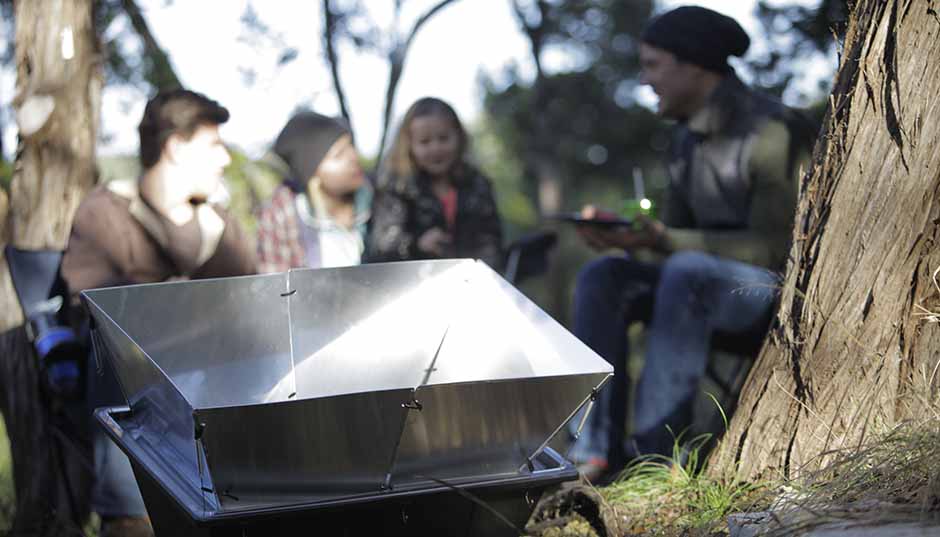I love the sun. While the rest of my family celebrates the advent of cloudy, cooler fall days, I mourn the loss of summer and the absence of constant, life-giving rays on my skin. I often refer to the flaming ball of gas we revolve around as My Friend Sun.

The first thing that threw me was its extreme low-techness. A black, 9-pound, angular box with a lid—that’s it? No buttons? No tricky assembly instructions? In this age of high, and ever higher, tech, I felt a bit skeptical that something that looked so basic could properly cook my food.
I then fretted about the fickleness of the weather. I’m blessed to live in Denver, which sees the sun roughly 300 days a year, but even so, conditions here can change in a blink. What if I set out my dinner to cook right before clouds rolled off the Rockies and obscured the sun? Or what if I left the food in too long? Or not long enough? Or I set the box out at the wrong angle?
Finally—at the nudge of my husband, who astutely observed I was overthinking the whole thing—I washed, quartered and seasoned some golden potatoes and set them out to roast, roughly following a recipe that came with the oven. The result? After two hours, I had perfectly tender, perfectly delicious roasted potatoes that my whole family loved.
This success bolstered my courage, and I decided to try baking, which is ever-so-slightly higher tech, because it requires you to attach reflectors on top of the lid. And this time, I used a regular recipe—for corn muffins—versus one tailored for the Solavore. I had to wing it on the cooking time, because in one spot, the manual says recipes usually take double what they would in a conventional oven, while in the section on baking it says cookies usually take 1.5 hours—far more than the usual 10 minutes in the oven. And should I cover them or not? I couldn’t tell. I decided to leave them uncovered in the solar oven for one hour—which turned out to be just right. The muffins turned out moist and flavorful.
And with that, my solar-cooking fears disappeared. Not only did I end up with two excellent dishes, but I did so in a perfectly green manner, without spending a penny on fuel —and with a dash of cooking adventure sprinkled in. According to the manual, I can use the Solavore all winter, even when it’s below zero, as long as I can see my shadow. I can’t think of a better way to bond with My Friend Sun until My Beloved Summer comes back again next year.
Visit solavore.com to learn about how Solavore is promoting solar cooking in the developing world, as an alternative to cooking over wood-burning fires.


